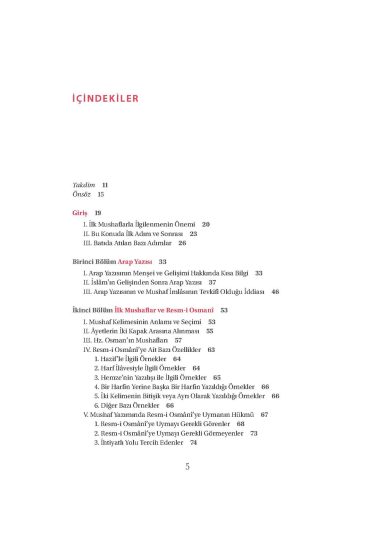IRCICA’s research program and publications on the earliest copies of the Holy Quran that are located in various libraries around the world aims to trace the process of transmission of the Quran starting from the first manuscripts and examine cases and developments relating to aspects such as script, orthography and physical composition, among others, with references to the historical periods and geographical locations. The present book represents the culmination of the findings and experiences accumulated throughout the above work. It synthesizes the observations and comparisons made in the study of earliest copies of the Quran and presents them in a concise and instructive format, as the book’s section titles indicate: the Introduction underlines the importance of the comprehensive field of research related to copies of the Quran and evokes efforts made in this field in the Muslim world and in Europe. Section 1 is on the origins and history of development of the Arabic language and the Arabic script. Section 2 is a comprehensive history of the earliest copies, including the processes of compilation of the Quran in book form between two covers, the “Rasm al-Uthmani”, i.e. the script and orthography of the copies made under the supervision of Caliph Uthman bin Affan and the different scholarly opinions about the necessity of conformity with it, the assignment of vowel signs, reading signs and punctuation signs to the Quranic text and many other subjects. Section 3 outlines the works and contributions of Orientalists in Quranic studies and collection of Quran copies. Section 4 examines the copies that are attributed to the period of Uthman bin Affan and Section 5, those attributed to the period of Ali bin Abi Talib. Section 6 outlines the findings of detailed studies conducted within the framework of IRCICA’s project on the copies located at the National Library of France, the Islamic Arts Museum in Cairo and the library of Tübingen University, Germany. The book was authored by Dr. Tayyar Altıkulaç, an authoritative scholar in Quranic studies and former President of Religious Affairs in Turkey.












